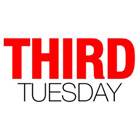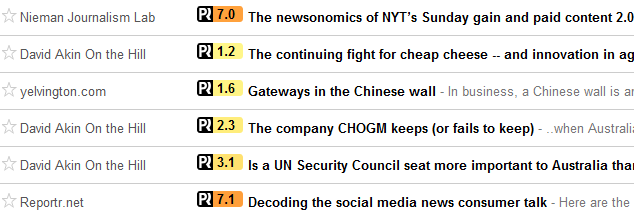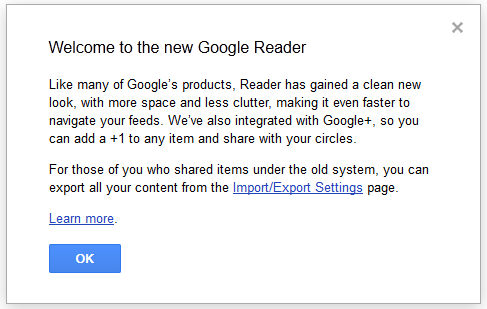Are you the master of your email inbox or is it the master of you?
For me, it’s definitely the latter. Email no longer serves my needs. In fact, I find myself scrambling daily to keep up with the demands of an overflowing email inbox. And this sucks productive time away from me.
The simple fact is that I no longer can keep up with all the email I receive – unless I want to make reading and responding to email a full time job. And I can’t. So, what have I done? I’ve resolved to budget the time I spend looking at my inbox in the same way I budget the time I will allocate to meetings and other tasks. I do what I can in the available time. And then I move on to my next priority.
 And the upshot of this approach? As I write this post, I have over a thousand unopened emails. That’s not email I’ve read and put aside. That’s email I haven’t even had the time to open.
And the upshot of this approach? As I write this post, I have over a thousand unopened emails. That’s not email I’ve read and put aside. That’s email I haven’t even had the time to open.
Every email in my inbox draws on my time. Even to read enough of an email to decide that I can safely delete it without response or action takes time. Time away from more productive work.
So, where does that leave me? What am I doing to try to deal with this problem?
Well, more than anything else, I’m trying to move much of my communication back to face to face meetings or over to video: I encourage people I work with to divert issues that might be contentious or require discussion to face to face meetings or Skype video calls and Google+ hangouts. If something needs to be tossed back and forth or common understanding created, seeing the other person’s face, being able to read their emotions and converse face to face can’t be beat. This leaves email only for those issues that can be dealt with by a simple yes or no response. And it removes much of the back and forth of long email strings in which people try to argue complex issues. If it’s complex or contentious, take it face to face either in the real world or via video call.
Another huge email problem is email’s impact on work-life balance. Rarely does a colleague phone me outside of working hours. A phone call makes them work too hard. If I answer, then they have to work through the discussion with me in real time. And the telling thing is that most will leave this until the next day, during working hours. But that’s not the case with email. It’s all too easy to “dump and run,” to send an email with a problem or request to someone. At any hour or day of the week. Once you’ve done this, it has become someone else’s problem. You’ve offloaded it. And you’ve violated their private time. It doesn’t matter if they respond when they receive it. The very fact that you’ve sent them a work email outside of working hours has pushed work into their private time. And if it’s a problem or troubling news you’ve sent them, you can be sure they’ll worry about it. That’s just not good. I try not to be part of this problem. I tell the people I work with to not initiate any emails outside of working hours. Yes, I work at all hours, evenings and weekends. But I routinely save emails I write outside of work hours in my draft folder. Then when I arrive at the office the next morning, I open the draft folder and send all the emails that are sitting there. They’ll be waiting for people when they arrive at work. When they can actually deal with them.
Does every email have to be responded to? In a word, no. We treat email like a phone call. We fell obligated to respond to every email just as we feel obligated to return phone calls. We must change that perception. In a world in which email flow has overmatched the time we have available to deal with it, we have to accept and become comfortable with the norm that many emails will not be responded to. And the sender must realize that if an email is important and unresponded to, they must reach out to the recipient via another medium. A phone call. A personal visit. An IM. A tweet. Whatever works. But simply sending an email saying, “Did you receive my earlier email?” is about the most ineffective thing you can do. Email has become a flow, just like Twitter or RSS feeds. And it’s up to the sender to be sure that they connect with me on the important material.
And that leads to the next rule I observe: Communicate in the medium the person you’re trying to reach prefers. We’ve all been conditioned to expect that email is the default business communications medium. Let’s change that. The best communications medium is the one that works best for the person I want to talk with. So, I should be sensitive to this. Find out what works for the other party and use that medium. Yes, you’ve spotted the contradiction here. Even though I have difficulty keeping up with email, if someone I want to reach prefers to hear from me that way, I’ll bow to their wishes and use email. It’s the other party’s wishes that count, not mine.
(Here’s an idea for a social media update service: A daily update that lets me tell people how I prefer to be communicated with. Something that I can easily change to match my circumstances. Something that is easily found and attached to my personal profile across social networks. If you build it, I’ll use it.)
One topic. One email. I just don’t understand why people believe that they should write emails that cover every possible topic – and then ask me to comment. I may find that I can easily agree with half of what they write. But I may need to give more consideration to one point. And so, I’ll put the email aside to be responded to later – which may be never. One topic. One email. That’s the best way to ensure you get a response.
Finally, I turn off push notifications from email – on my PC, on my handheld, on my tablet. Those constant niggling alerts are a good idea only for the people who design the email programs. But for the user, they kill productivity. Having them turned on is just like having a group of people sitting behind you, each tapping you on the shoulder at random times. Every time you’re interrupted, it takes time to get back in the flow of what you’re trying to do. So, I just eliminate those interruptions by turning off the darned alerts.
I’m not alone in struggling with this problem.
I know I’m not alone in struggling with email. Fred Wilson recently wrote about The Black Hole of Email and MG Siegler ranted that he Still F***ing Hate[s] Email. And in this week’s Inside PR, Martin Waxman and Gini Dietrich share their frustrations with email and also what they do to try to manage it. Gini also has written her own take on the ever-looming inbox.
Do you have email under control or does your email inbox control you? What practical strategies do you employ to make email work for you?











